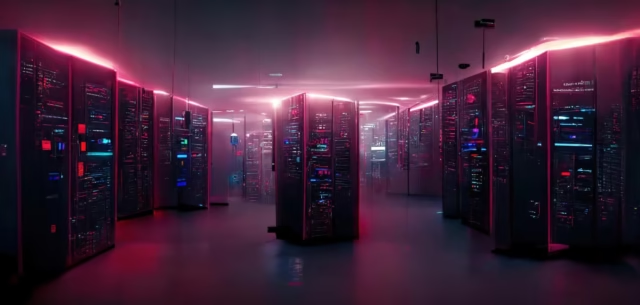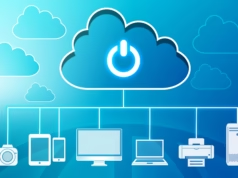Doing big jobs on a slow computer can take an eternity. Timing is everything, whether it’s weather forecasts, space exploration, or health testing.
A report states that businesses utilizing HPC servers reduced their processing time by nearly 50%. That means they received answers sooner and saved time and money.
But what are HPC servers? HPC is High-Performance Computing. They are high-powered computers that can perform lots of tasks simultaneously. They assist scientists, engineers, and companies in completing big tasks much faster.
Now, let’s discuss how they accomplish this. Here are five easy ways HPC servers halve processing time.
1. Parallel Processing Accelerates Work
Parallel processing is one of the most significant advantages of HPC servers. They divide a large job into smaller jobs and execute them simultaneously. Rather than completing one task and beginning another, the server performs several tasks simultaneously, saving hours on tasks that typically take hours.
Why Parallel Processing Matters
Parallel processing assists in weather forecasting, scientific experiments, and product testing. These fields work with huge data sets that cannot wait. Working on tasks alongside HPC servers reduces the time to complete the tasks by half.
- Tasks are executed concurrently rather than sequentially.
- Big jobs are completed sooner with fewer waits.
- More precise results since waits are minimized.
2. Accelerated Data Transfer
HPC servers are also unique due to their cutting-edge networking architecture. They transfer data between systems at extremely high speeds. Regular servers tend to halt when data is too voluminous, but HPC servers employ robust networks that easily support heavy traffic.
The high-speed networks enable the system to operate continuously with no bottleneck. When data transfer happens constantly, the entire task gets completed within a shorter period of time.
- Smooth transfer of data does not cause slowdowns.
- Big files transfer quickly over systems.
- Less waiting time translates into fast results.
3. Powerful CPUs and GPUs
Another way HPC servers save time is by using top-class GPUs and CPUs. These are the power forces that push the system forward. They run at top speed and perform all types of tasks. CPUs are ideal for general tasks, while GPUs perform AI and deep learning tasks. When both are combined, they drive performance to the next level.
Without the strong processors, the system can’t run at top speed. HPC servers integrate superior hardware to finish tasks much quicker, which is one of the key reasons they are used in research facilities and high-end organizations.
- CPUs process complex instructions.
- GPUs process jobs with lots of graphics or AI.
- Together, both reduce processing time by enormous amounts.
HPC Servers Keep Systems Cool and Running
Computers get hot if they work hard. Heat slows them down. However, HPC servers have special cooling systems. These systems cool the machines even if they run all day.
Some of the servers are cooled using liquid. Others are cooled using air with powerful fans. This cooling keeps the servers in good shape. They don’t slow down or break down. This keeps their speed fast.
- Cool systems result in better speed.
- Fewer overheating issues.
- Long hours of work without pause.
- Quicker results since nothing interrupts.
4. Optimized Software and Algorithms
Hardware by itself is not able to generate results. Software also has a gigantic role to play. HPC uses streamlined software and intelligent algorithms, which do not include useless steps. This results in every task being fast and simple. The system does not waste even a minute on non-productive activity.
When software is tuned correctly, it uses the hardware more efficiently. This means faster analysis and fewer errors, saving money and time for businesses that depend on accurate results. Fewer steps mean quicker results.
- Less power is used by efficient software.
- More speed and better accuracy.
HPC Servers Employ Superspeed Storage
One reason computers become slow is storage. If storage is slow, even a fast processor will not help. HPC servers use high-speed storage tools.
They use SSDs, which are faster than hard drives. They also use NVMe, which helps move data quickly between storage and the processor.
With quick storage, the servers can save and open files within seconds, reducing the overall processing time.
- Faster storage implies.
- Fast opening and saving of files.
- No lag when loading data.
- Increased speed in launching apps.
So, HPC servers remain fast because they employ the appropriate type of storage.
5. Scalable Design for Expanding Needs
The last significant consideration is scalability. HPC servers are scalable with business needs. When the workload increases, you can add more servers to the cluster. This strengthens the system and speeds it up without sacrificing speed.
- More servers mean more speed.
- More workload does not crash the system.
- Intense performance with high demands.
Conclusion
Opportunity gained is time saved. HPC servers enable industries to provide results twice the speed of conventional systems. They allow parallel processing, high-speed networking, heavy hardware-tuned software, and growable growth. Each one of these reduces time and achieves results quickly.
This is a breakthrough for companies, research facilities, and industries handling heavy data. So, whenever you consider speed, consider HPC servers. They are the unseen heroes working tirelessly so you do not have to wait.







